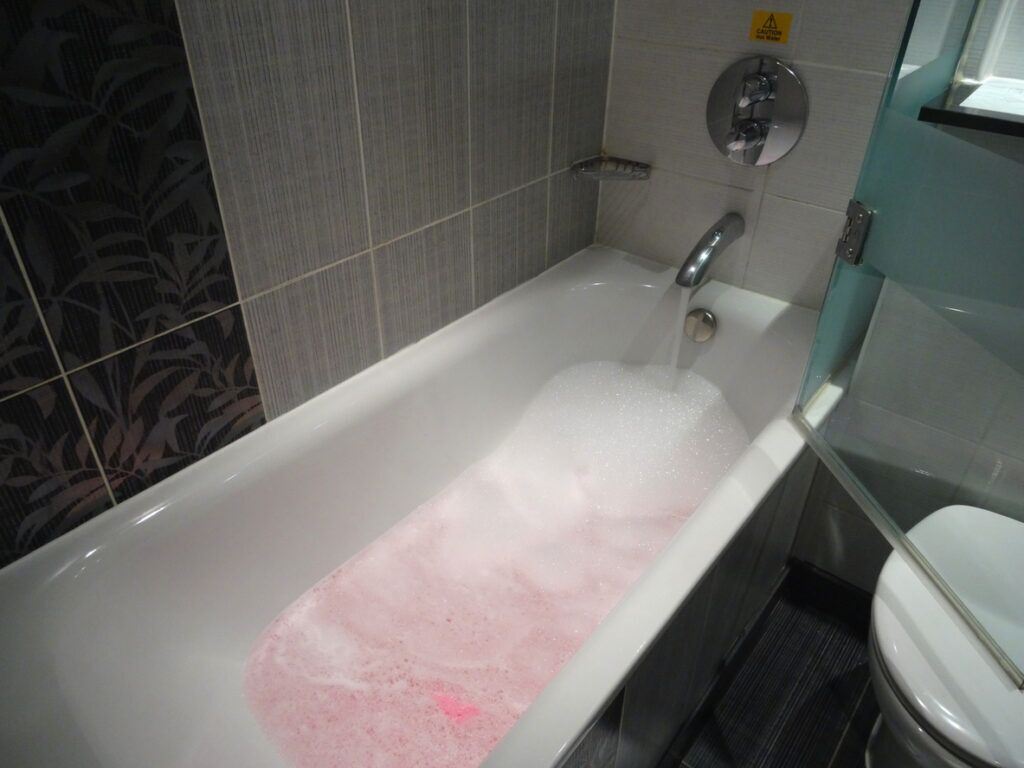What are your beliefs on Water Coming up Bathtub Drain?

Sewage back-up in the tub can be an upsetting and unsanitary problem for any home owner. Not only is it inconvenient, yet it likewise presents major health threats and suggests underlying concerns with the plumbing system. Comprehending why sewer is turning up with the bathtub is important for taking ideal action to resolve the trouble efficiently.
Intro to the Issue
Common Reasons for Sewage Back-up
Clogs in the Sewage System Line
Among the most typical reasons for sewer backup is an obstruction in the sewer line. This can happen because of the build-up of debris, grease, or foreign things in the pipes, stopping correct flow and creating sewer to back up into your tub.
Tree Origin Intrusion
Tree origins seeking dampness and nutrients can infiltrate sewage system lines with small cracks or joints. In time, these origins can grow and increase, triggering substantial damage to the pipelines and resulting in sewer back-up issues.
Recognizing the Problem
When sewage draws back up right into the bath tub, it's a clear indication of an issue with the water drainage system. The wastewater that needs to be flowing away from your home is instead discovering its way back into your home, which can lead to significant damages and health hazards.
Prospective Causes
Numerous elements can contribute to sewer backup in the bath tub. From obstructions in the sewer line to issues with the plumbing framework, determining the source is essential for discovering an option.
Aging Infrastructure
Older homes may have outdated plumbing systems that are much more at risk to corrosion, splits, and damage. As pipes age, they become extra susceptible to leaks and obstructions, enhancing the chance of sewage back-up events.
Heavy Rainfall or Flooding
Throughout periods of heavy rainfall or flooding, the sewer system might become overloaded with excess water, creating backups and overflows. This can lead to sewer backing up into bath tubs and various other fixtures inside the home.
Indications of Sewer Back-up
Foul Odors
Unpleasant odors originating from drains or components, specifically in the bathroom, may indicate sewage back-up concerns. These smells are usually strong and persistent, signaling an issue that calls for instant focus.
Slow Draining Fixtures
Tubs, sinks, and bathrooms that drain pipes gradually or otherwise in all could be experiencing sewage backup. If multiple fixtures are influenced simultaneously, it's most likely that the problem originates from a common factor, such as the primary sewer line.
Gurgling Sounds
Unusual gurgling or bubbling sounds coming from drains pipes when water is running somewhere else in the house are a sign of air trapped in the plumbing system. This air build-up can result from sewer backup and must be examined without delay.
Health And Wellness Threats Associated with Sewer Backup
Contamination of Water System
Sewer backup can infect the water system in your home, posturing a severe health threat to you and your household. Exposure to infected water can cause gastrointestinal problems, skin infections, and various other diseases.
Mold Growth
Moisture from sewage backup can develop perfect problems for mold and mildew development in your home. Mold and mildew spores can aggravate breathing issues and create allergic reactions in sensitive individuals, making timely clean-up vital.
Spread of Condition
Sewage includes unsafe germs, infections, and bloodsuckers that can trigger a range of diseases, including hepatitis, cholera, and gastroenteritis. Entering contact with sewage or polluted surfaces puts you at risk of infection.
Tidying up After Sewer Back-up
Sanitation Procedures
Completely disinfect and sanitize influenced locations after sewage backup to remove harmful bacteria and protect against mold and mildew growth. Usage proper cleaning items and safety gear to make certain safe and efficient cleaning.
Restoration of Affected Areas
Repair any type of damages to floor covering, wall surfaces, or fixtures caused by sewer back-up. Relying on the extent of the damages, you might need to change carpets, drywall, or various other products to recover your home to its pre-loss problem.
Immediate Actions to Take
Shutting Off Water System
In the event of sewage back-up, it's important to shut off the supply of water to prevent more contamination and damages. Locate the major water shutoff valve in your home and shut it off up until the issue can be resolved.
Speaking To an Expert Plumber
Handling sewer backup is not a do it yourself job. Get in touch with a licensed plumber with experience in taking care of sewage-related issues to examine the situation and carry out required fixings or cleanups.
Avoiding Contact with Polluted Water
Up until the sewage backup is fixed, prevent contact with polluted water to avoid the spread of microorganisms and microorganisms. Put on protective gear if you have to remain in the affected location and wash your hands completely afterward.
Safety nets
Routine Upkeep of Sewer Lines
Set up routine assessments and maintenance of your sewer lines to recognize and attend to potential problems prior to they intensify into major troubles. This can consist of cleaning particles, evaluating for tree root breach, and repairing any type of broken pipelines.
Mounting Bayou Shutoffs
Consider installing backwater valves in your plumbing system to avoid sewer from flowing back into your home during durations of heavy rainfall or flooding. These valves immediately close when water starts backing up, protecting your property from contamination.
Proper Disposal of Household Waste
Avoid flushing anything aside from bathroom tissue and human waste down the commode to stop blockages and obstructions in the drain line. Dispose of grease, oil, and various other house chemicals properly to minimize the threat of plumbing issues.
Why Is Water Backing Up in My Bathtub When I Flush My Toilet?
What to do about a sewer line clog
First, don’t bother with plunging. No amount of plunging will dislodge the clog in a sewer line. The clog is too far away. Plungers are for clogs in the toilet itself, not the sewer line. Plus, the most likely causes of a sewer clog are:
Tree roots Flushed toys or feminine products Grease buildup Those items don’t move easily. And in the case of tree roots, the roots need to be cut out of the pipe and the pipe will need to be repaired.
You’ll need a closet auger. A closet auger is a type of plumber’s snake with a protective cover to keep from scratching the delicate porcelain toilet. If the clog is further down, you may need to remove the toilet or use one of your cleanouts to get to the clog.
We also recommend doing a video inspection of the drain to ensure that the cause of the clog has been completely removed. Otherwise, you could have the same problem again in a few days or weeks.
https://mspplumbingheatingair.com/blog/why-is-water-backing-up-in-my-bathtub-when-i-flush-my-toilet

I hope you enjoyed reading our article on Why sewage is coming up through your bathtub. Many thanks for spending some time to browse our blog. Liked our review? Please quickly share it. Let somebody else locate it. We treasure reading our article about Why is There Sewage Coming Up Through the Bathtub.
Call Today